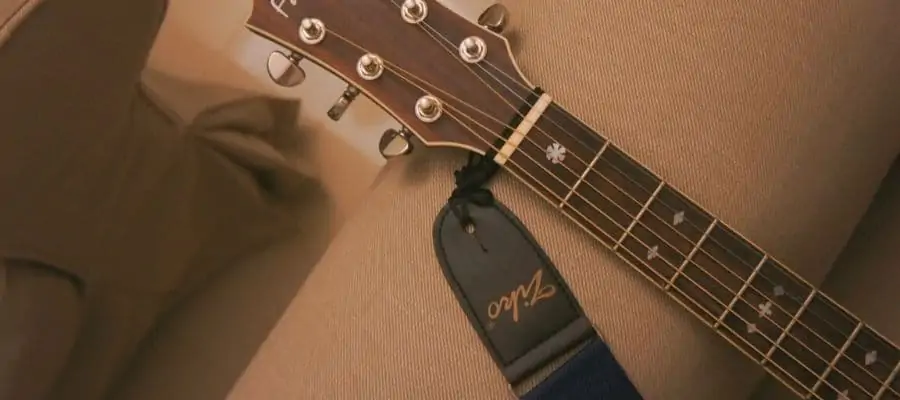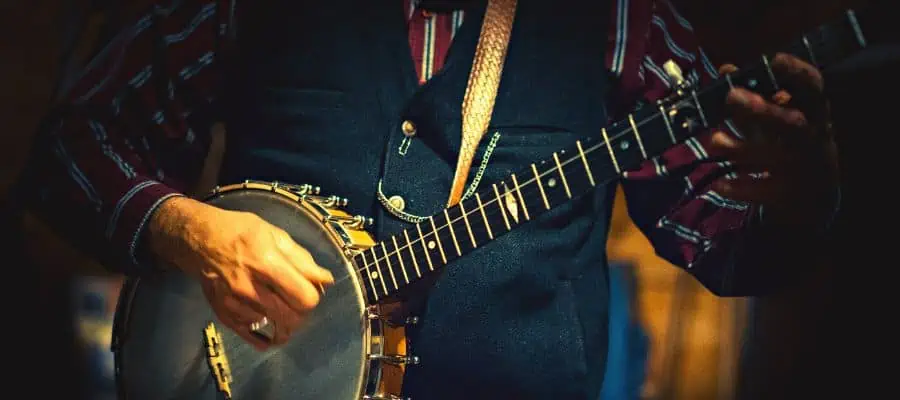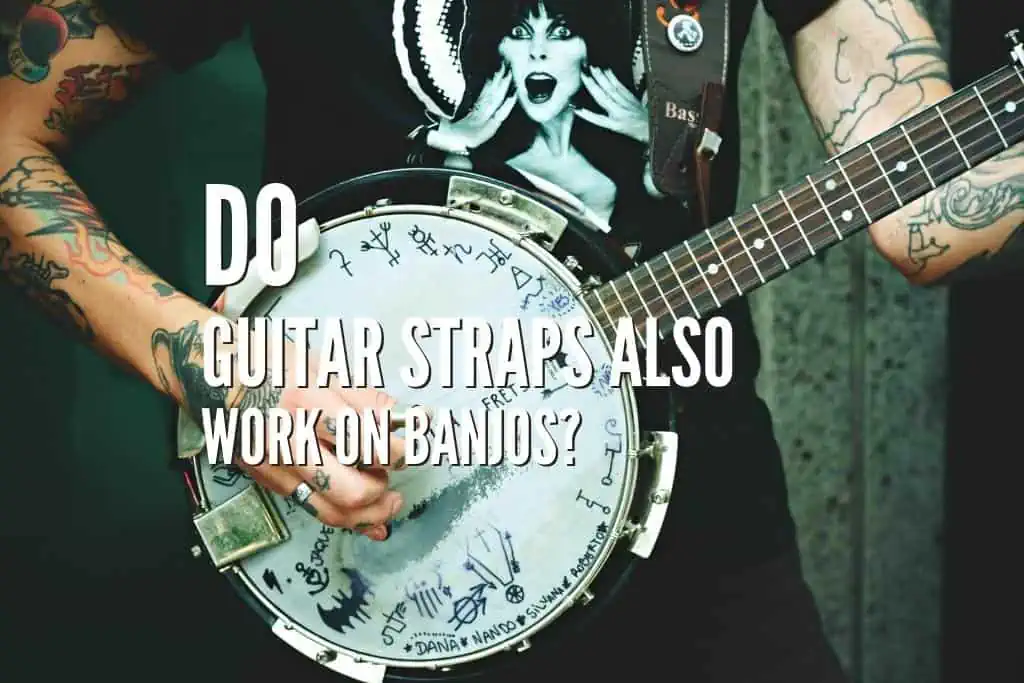Though being a multi-instrumentalist can be a source of pride and joy, it often requires additional time, effort, and money. That’s why these talented musicians need to get creative when using their gear and accessories. For example, can a guitar strap be used on your banjo too?
Guitar straps can also work on banjos. Since the two instruments are similar in shape and build, their straps are often interchangeable. With that said, there are several factors to consider if you want to make your strap multi-purpose; these include length, attachment points, and material.
If you want to learn more about these factors and how to use them in your decision-making process, read on. Below, I’ll cover everything you need to know about using your guitar strap on a banjo, including a few fool-proof tips on how to get the attachment process right on the first try.
Factors To Consider Before Attaching a Guitar Strap to a Banjo

Though the process is possible, there are several factors to consider before attaching a guitar strap to a banjo, so let’s explore them more in-depth.
Strap Length
This is probably the most important quality, as there’s usually a pretty clear size disparity between guitars and banjos. The latter are traditionally smaller-bodied than their counterparts, so a strap that would be just perfect for a guitar would likely be uncomfortably long when attached to a banjo.
However, that’s not always the case, so remember to consider your specific instruments’ sizes and the strap length and width you’re eyeing. Ultimately, your best bet is to invest in an adjustable strap that’ll allow you to get that perfect length every time.
Your Preferences
Even though guitar and banjo straps are similar in function, they still boast a few unique features that can make a world of difference to some instrumentalists.
For example, straps specifically designed for banjos often feature attachments for capos, picks, and other accessories, which aren’t always included in guitar straps. Even though the switch might be technically possible, some players won’t feel comfortable.
So, always consider your preferences – after all, the whole point of using a strap in the first place is to make the playing experience more comfortable and enjoyable.
Instrument Weight
If you check out the specs of any strap model, you’ll see a specified weight range that refers to the volume that specific straps can hold comfortably. If you plan to use the same accessory on several instruments, it’s worth weighing each to see if they all fall within that specified range.
Bonus tip: Try to find a relatively wide and padded model. Don’t let their small size fool you; banjos can be quite heavy – so much so that you might need to invest in extra-strength guitar straps to keep them in place.
Attachment Points
If you’ve already used straps, you know they’re connected to two attachment points – one at the bottom of the body and one at the top of the headstock. However, since, as mentioned, there are often some vast size differences between guitars and banjos, these attachment points are often placed at varying distances, which might make using the same strap a bit of a challenge.
That’s why you’ll want to invest in a strap with universally-spaced attachment points or, better yet, adjustable ones.
Strap Material
Not all guitar straps are made the same, and the material can heavily impact their performance. And if you plan on using the same strap with several instruments, you better ensure it’s extra durable.
The good news is that you have plenty of options when it comes to material, each boasting a different set of advantages. For example, nylon and synthetic straps are known for being affordable and lightweight.
On the other hand, leather straps are far more durable and aesthetically pleasing, which is why I’d recommend going for this variety if your budget allows for it.
With all that said, the most important criterion to rely on when choosing a strap material is its feel – which depends on your preferences. If possible, go to a local guitar equipment store and try different models made of different materials to see which feels the best. Then, you can filter your options based on that experience.
How To Attach a Guitar Strap to a Banjo

As long as you consider the factors outlined above, you should be able to find an excellent multi-purpose strap that you can use both on your banjo and your guitar. The next step is to learn how to attach it properly.
Here’s how to attach a guitar strap to a banjo:
- Locate the attachment points. These will look like buttons placed at the bottom of the body and the top of the headstock. If there aren’t any, you can always install them yourself.
- Attach the strap at both ends. Make sure it fits securely.
- Adjust the strap length. This takes a bit of trial and error, but once you hit that sweet spot, you’ll immediately know.
- Test the strap. To do so, you’ll want to play a short session to see how everything feels. Readjust if necessary.
If you’ve chosen an older-style strap that’s not as versatile, you can always use an adapter to help it fit the banjo’s attachment points more securely. The same can be said of strap length; you can always take it to a professional to get it tailored to your liking.
Conclusion
Most guitar straps will also work on banjos, so investing in two different models for each instrument is unnecessary. However, if you’re in the process of getting a singular multi-use strap, make sure to keep the considerations outlined above in mind during the decision-making process.
Alternatively, remember that straps aren’t always necessary, so you can always do without them. However, if the comfort and security they provide are worth it, hopefully, the above tips have given you some ideas on how to make them interchangeable.
If you found this article useful, you may want to save this pin below to your Guitar board.

Recent Posts
Some guitarists insist on buying an expensive amplifier with their electric guitar. They assume that this is a must for every type of guitarist out there. However, in some situations, this isn’t...
Top 50 Free Realistic Guitar VST Plugins With Sound Examples
As technology has rapidly advanced in the recent decade, computers are stealing more and more roles from physical musical instruments and accessories. Nowadays, you do not need expensive amps,...

